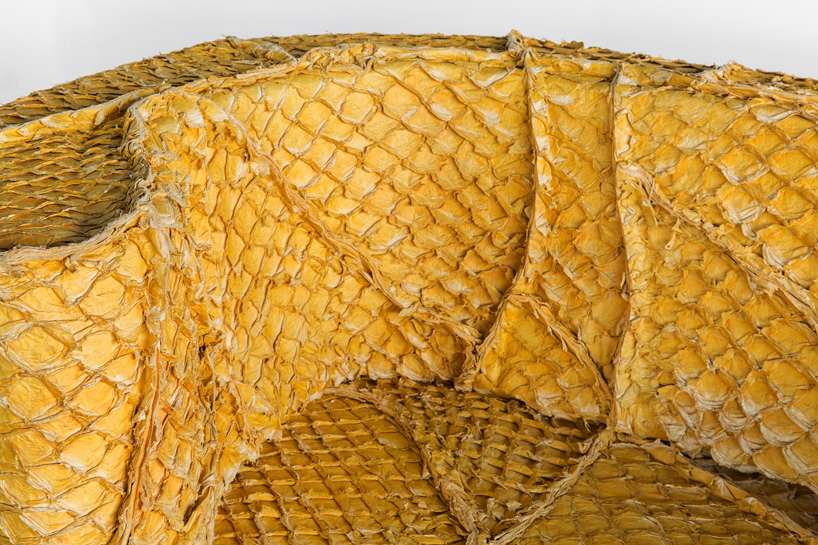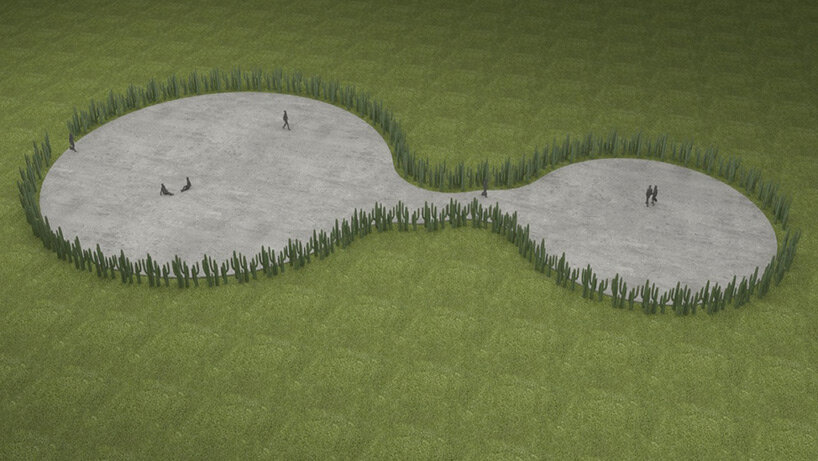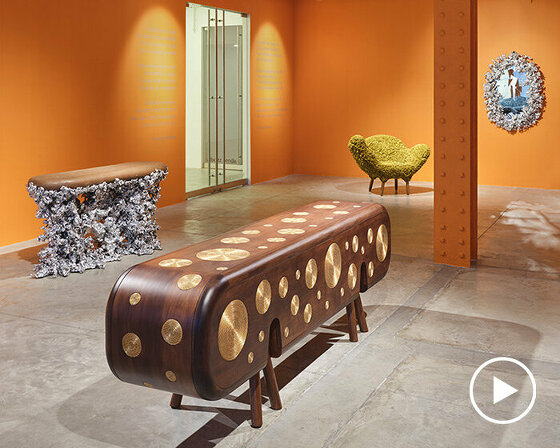on april 1, 2020, new york gallery friedman benda initiated a series of online interviews aimed at connecting individuals across the world with leading voices in the creative field. design in dialogue is a conversational program hosted alternately by curator and historian glenn adamson and designer stephen burks that engages with designers, makers, critics, and curators as they reflect on their careers and creative processes. against the backdrop of COVID-19 and global lockdowns, the conversations are held virtually on zoom for 1 hour for anyone in the world to tune in to, and include a participatory Q&A with the audience in attendance. friedman benda has since presented more than 80 episodes, and will continue with a lineup of future guests, each offering unparalleled insight into the sensibilities, musings, and memories of today’s creative protagonists. see our recent feature of irma boom on the permanence of the printed page, and philippe starck’s personal profession on democracy and dematerialization.
on february 24, 2021, design in dialogue welcomed humberto campana, whose work with his brother fernando has defined avant-garde design practice in brazil for more than three decades. in a conversation with glenn adamson, humberto discussed the way estudio campana has formed its vocabulary through partnerships with international manufacturing and local artisans, his close relationship with his brother, and the monumental undertaking he’s currently working on in the city where he grew up.
watch the full video interview at the top of the page and stay tuned as designboom continues to share design in dialogue features. see all past episodes — and RSVP for upcoming ones — here.

campana brothers mix materials and methods of making for ‘hybridism’ at friedman benda
image by dan kukla | read more on designboom here
humberto began by describing his relationship with his brother fernando as a close friendship between two people deeply passionate about design. while they both also engage in separate creative projects from sculpture to collage, the campana brothers have spent three decades operating together in the areas of architecture, landscaping, scenography, fashion and more. ‘I’ve been working together with fernando for 35 years — it’s like a marriage!’, humberto laughs. ‘everybody thinks that we are the same person, but we are completely different from each other. I like to be here every day in the studio. I like the process of being with the artisans, or drawing — I need some discipline. for fernando, most of the time he stays in his house and comes here with a fresh eye. fernando likes to draw projects, and I myself like to realize his projects and my projects. sometimes it’s difficult, but we both have the passion for design, and I also like him very much. we are very good friends as well.’

noah bench, 2017 | cast aluminum | woven fabric |41.25 x 101 x 42 inches | 105 x 256.5 x 107 cm | edition of 8
image by photo by fernando laszlo | read more on designboom here
rooted in brazilian culture and traditions, their work carries universal values of freedom and human dignity at its core, with an intense focus on materials. their creative process raises everyday materials to nobility by interpreting the colors, textures, and creative chaos of brazil in a poetic way. ‘the material is the character looking for his author,’ humberto says. ‘I have a passion for materials. the main challenge is to transform something very casual, something banal, into something noble. we didn’t always have the means to construct furniture in wood, and we didn’t want to work with the noble woods of the amazon, so we started looking around for things that we could construct furniture with, without so many means. I like to create shock with materials — one soft, one other cold.’ this sense of experimentation has led humberto to work with everything from stuffed animal toys to natural palm fibers.

campana brothers wrap são paulo’s aesop store in brazilian brick
read more on designboom here
humberto also went on to explain how he personally, and his studio, reacted to the COVID crisis, and the impetus of creative projects confinement led to. ‘I started to create a diary of my quarantine,’ he shares. ‘I had lot of design and architecture magazines around, and I started cutting images and creating a narrative about my moods. I started making collages about things that were in my head, my bad moments, hopes, dreams, travels, in order to maintain my sanity. that helped me a lot. little by little the city started to open, we got back to the studio, and some people are still in home offices. we found a way to adapt to the situation, and we’re now creating a lot of things since coming back to the studio — new projects, new chairs, curtains, clothing, landscape architecture…’

‘bolotas’ armchair (brown), 2015 | sheep’s wool pillows covering a stainless steel structure with ipê wood | 105 x 110 x 85 cm | 41.34 x 43.31 x 33.46 inches | edition of 8
image by fernando lazlo | read more on designboom here
a monumental, cultural landscape architecture project is currently at the center of humberto’s creative focus. he shared more details during friedman benda’s ‘design in dialogue’ about this major undertaking, and the vision he has for the project’s future. ‘we have a piece of land in the countryside that we inherited from our family. 20 years ago, we planted 15,000 native trees in the area — then we abandoned it. since the COVID crisis, we decided to make a foundation there. the idea is to make an open museum and a landscape, and create green installations there. we are creating the poetry and the construction of the pavilions, but the idea is to find someone who can sponsor the logistics of bringing people there. it’s kind of a gift to the city where I grew up. we want to create a school there for crafts — vernacular traditions and handcrafts like weaving, embroidery, carpentry, welding — and a museum, with concerts and workshops. this summer we planted almost 2,000 native trees and I investigated which trees bring animals and bees, so we can create a sanctuary. I want to teach, to create a partnership, to open it to the public, and to give away what the universe has given to me and fernando.’

image from humberto campana’s ‘design in dialogue’ presentation for friedman benda

pirarucu sofa, 2014 | pirarucu’s leather, foam and curtains of bamboo covering a steel and wood structure | 70 x 170 x 70 cm | 27.56 x 66.93 x 27.56 inches | edition of 8
read more on designboom here

the ‘pirarucu’ sofa is made with the tanned skins of one of the world’s largest fresh-water fish found in the amazon
read more on designboom here

installation views of campana brothers’ ‘antibodies’ at the milan triennale in 2010
images © designboom | read more on designboom here

campana brothers’ exhibition at MAM RIO looks back at the duo’s 35 years of design
image by fernando laszlo | read more on designboom here

the exhibition ’35 revolutions’ spans the campana brothers’ long career, bringing together a wide selection of design pieces and sculptures developed over the past decades
image by fernando laszlo | read more on designboom here

a ‘pavilion of contemplation’ surrounded by cacti forms part of humberto campana’s undertaking in his hometown

portrait of humberto campana, courtesy of friedman benda
—
design in dialogue is a series of online interviews presented by new york-based gallery friedman benda that highlights leading voices from the field — designers, makers, critics, and curators — as they discuss their work and ideas. hosted alternately by curator and historian glenn adamson and designer stephen burks, the conversations are held on zoom for 1 hour and include a participatory Q&A.
watch the full video interview with humberto campana at the top of the page and stay tuned as designboom continues to share design in dialogue features. see all past episodes — and RSVP for upcoming ones — here.
CAMPANA BROTHERS (55)
DESIGN IN DIALOGUE (32)
FRIEDMAN BENDA (60)
PRODUCT LIBRARY
a diverse digital database that acts as a valuable guide in gaining insight and information about a product directly from the manufacturer, and serves as a rich reference point in developing a project or scheme.

















